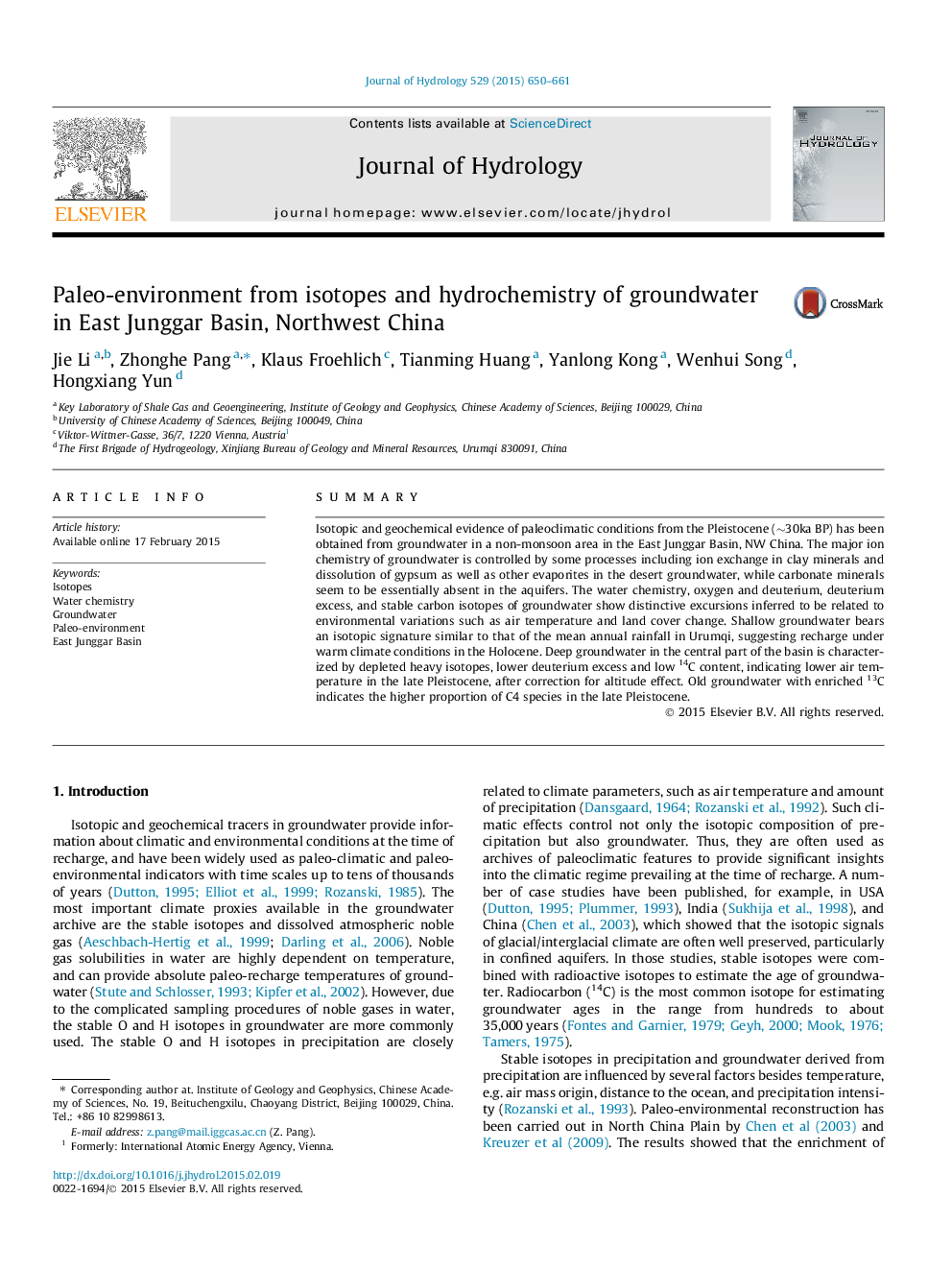| Article ID | Journal | Published Year | Pages | File Type |
|---|---|---|---|---|
| 4575936 | Journal of Hydrology | 2015 | 12 Pages |
•Paleoenvironment was reconstructed for a non-monsoon region in West China.•Groundwater evolution is well constrained to support the paleo-environment study.•Isotopes indicate air temperature was lower in the late Pleistocene.•13C of groundwater suggests there were more C4 plants in the late Pleistocene.
SummaryIsotopic and geochemical evidence of paleoclimatic conditions from the Pleistocene (∼30ka BP) has been obtained from groundwater in a non-monsoon area in the East Junggar Basin, NW China. The major ion chemistry of groundwater is controlled by some processes including ion exchange in clay minerals and dissolution of gypsum as well as other evaporites in the desert groundwater, while carbonate minerals seem to be essentially absent in the aquifers. The water chemistry, oxygen and deuterium, deuterium excess, and stable carbon isotopes of groundwater show distinctive excursions inferred to be related to environmental variations such as air temperature and land cover change. Shallow groundwater bears an isotopic signature similar to that of the mean annual rainfall in Urumqi, suggesting recharge under warm climate conditions in the Holocene. Deep groundwater in the central part of the basin is characterized by depleted heavy isotopes, lower deuterium excess and low 14C content, indicating lower air temperature in the late Pleistocene, after correction for altitude effect. Old groundwater with enriched 13C indicates the higher proportion of C4 species in the late Pleistocene.
